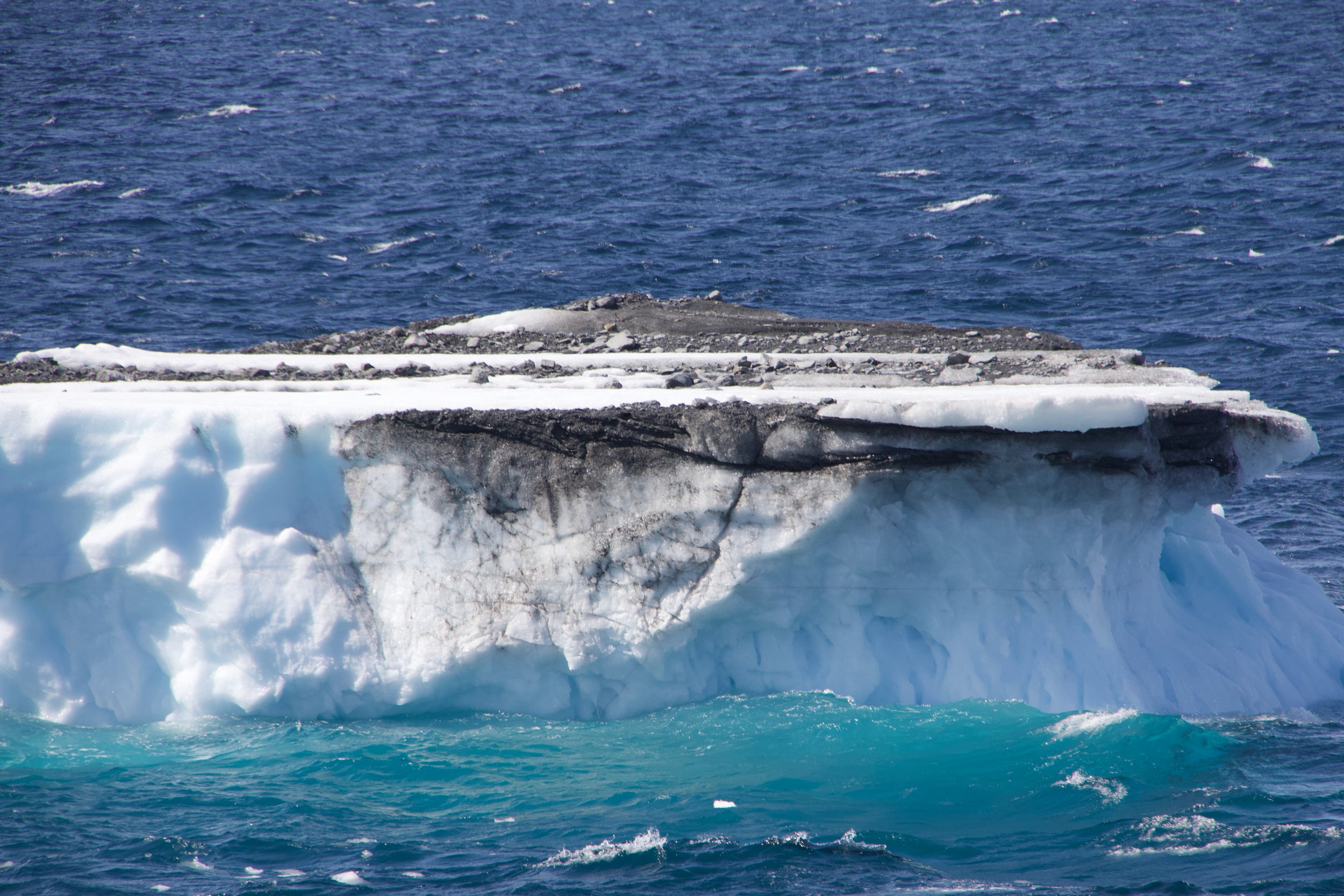For days now we have been dodging floating icebergs. They’ve blocked us from reaching our last few sampling stations and we’ve been forced to pull up equipment early for fear of being locked in the ice. This morning, as the sun rose and burned off the fog that has enshrouded us for almost a week, the light glinted off more than a dozen icebergs, and this afternoon we’ve repeatedly swerved and altered our route to avoid collisions (Fig 1).
Fig 1 - Track - Normally we sail in straight lines between our stations. For the past several days we’ve had to carefully make our way around the ice, occasionally making sharp turns to avoid big icebergs.
Even though they are literally putting kinks in our plans, I have to admit to being thrilled by the sight of these gleaming sculptures of ice (Fig 2). Not only do they make for spectacular photographs, they’re also the modern analogue of one of the phenomena we’re studying aboard the RV Celtic Explorer.
My name is Dr. Allison Jacobel and I’m an Assistant Professor at Middlebury College in the Department of Earth and Climate Sciences. Together with Ashley Rodriguez, an undergraduate in my lab at Middlebury, Apollonia Arellano, a new graduate student at Columbia University’s Lamont-Doherty Earth Observatory (where I earned my PhD), and the other scientists aboard cruise CE23011 we are studying the record of Earth’s past climate preserved in marine sediments. These layers of sediment and the microfossils they preserve, can tell us about the ocean’s past temperature, salinity, productivity and how it moved heat around the planet.
One of the key things about the sediments below our ship is that they are full of rocks. These rocks didn’t float out to sea on their own, but were instead picked up by ice streams and glaciers on land and then, as they calved into the ocean, carried out to sea on icebergs (Fig 3). The ‘ice rafted debris’ we find in our sediment cores indicate the silent passage of icebergs decades to thousands of years ago.
Fig 2 - An iceberg floating by close to the ship.
Twenty-one thousand years ago Long Island sat at the foot of an enormous glacier fed by an ice sheet that covered the greater part of North America. This was the Last Glacial Maximum, the most recent ice age. Our transition from the LGM, when Middlebury was covered by almost a mile of ice, to the warm climate of the present was not a smooth one. Research, including work by my Ph.D. advisor Dr. Jerry McManus and myself, has shown that the deglacial transition was punctuated by armadas of icebergs that flowed into the ocean and disrupted deep water circulation with implications for the climate of our entire planet. Studying the history of iceberg delivery in the Arctic is an important way to help us understand abrupt changes in climate and to shed light on the sensitivity of the climate system to additions of freshwater. We’re also interested in sedimentological properties like the size distribution in the fine fraction which can help us determine paleo current speeds.
Today the Arctic is experiencing a rate of warming faster than almost any other place on Earth. Dramatic ice loss is occurring from the Greenland Ice Sheet and this year, the Arctic seas have experienced record-breaking sea surface temperatures. Although our work on the RV Celtic Explorer is focused on past changes, our results are also important for modern climate prediction efforts. Observational data are currently equivocal about how the Atlantic Meridional Overturning Circulation is changing, but new results (explainer article here) suggest it may cross a tipping point as soon as mid-century. Understanding how past inputs of meltwater affected circulation is critical to improving these models and climate forecasts.
I believe there is immense value in showing people the beauty of our planet, teaching about the marvelous improbability of our existence, the fascinating intricacies of Earth systems, the fragility of the ecosystems we depend on. It is inarguable that we are on the wrong path, that we are doing catastrophic damage to our planet, and that we are changing our behavior too slowly. My hope is that the photographs, stories, and data I share will help motivate people to demand action on climate change, especially Middlebury students whose career choices will help determine the kind of impact they will have on our planet and our future. This is an incredibly important time to be alive, to understand the costs of our actions, and to change course. It is not too late to do what we can to protect our planet, and it never will be. The time to act is now.
Fig 3 - A dirty iceberg carrying ice rafted debris (IRD).
Modified from a blog by A. Jacobel originally posted 7/29/2017 from the RRS Discovery


